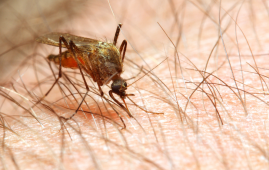

Context
Research on the role of minerals in female reproductive health, particularly during the menstrual cycle, is a complex field that highlights the connection between female fertility and food. There is a dearth of systematic research about the impact of minerals during the menstrual cycle on female fertilization pathways, despite the focus on micronutrients as a preventive measure against reproductive problems.
While minerals linked to male fertility have been studied in great detail, women’s reproductive health has gotten less attention from academics, with many studies ignoring the menstrual cycle.
An overview of the management of female reproduction
Hormones play a vital role in human reproduction by regulating several processes, including ovulation, implantation, gestation, and menstruation. Hormones support the endometrium to offer the perfect environment for a fertilized egg, and they also aid in follicle maturation and ovulation.
Because they create oocytes for fertilization and synthesize hormones like progesterone and estrogen, the ovaries are crucial to the health of a woman’s reproductive system. More gonadotropin hormone-releasing hormone (GnRH) is produced during the follicular phase, which stimulates the release of luteinizing hormone (LH) and follicle-stimulating hormone (FSH). In contrast, during the luteal phase, GnRH release is suppressed as progesterone levels rise.
Oxidative stress can harm cellular structures and possibly influence fertility. It arises when the body produces more free radicals than it can detoxify. Indirect effects on female fertility include iron excess, selenium deficiency, zinc shortage, inadequate magnesium intake, and copper imbalances.
Mineral intake’s effect on female fertility
Zinc
Zinc controls the generation of LH, FSH, and steroids while shielding the oocyte from reactive oxygen species (ROS) damage brought on by oxidative stress. This makes zinc crucial for hormone production, endometrial health, and fertility.
Maintaining appropriate zinc levels is essential for fertility because zinc finger proteins support the activity of the estrogen receptor. Pre-eclampsia, irregular ovarian growth, irregular menstrual cycles, aberrant LH and FSH synthesis, and other reproductive health issues can all be brought on by zinc deficiency.
Selenium
To make selenoproteins, which change thyroxine into triiodothyronine (T3), the biologically active form, selenium is needed. The female reproductive system depends on thyroid metabolism to maintain hormonal balance because both hyper- and hypothyroidism can interfere with menstruation and impair conception. For regular and efficient ovulation, selenium levels must be maintained at their optimal levels.
Iodine
Because iodine interacts with reproductive hormones including progesterone and estrogen, it is necessary for thyroid function and hormone production. Reproductive problems, infertility, and hypothyroidism can result from iodine insufficiency.
Getting enough iodine is essential for every stage of the menstrual cycle. Lugol’s iodine therapy has been shown in animal trials to improve the fertility of infertile cows.
Iron
Hemoglobin’s essential component iron is needed for both the physiological processes and the transportation of oxygen by red blood cells. Anemia, decreased oocyte quality, and fewer ovulations are all possible effects of iron deficiency.
For women attempting to become pregnant, maintaining sufficient levels of iron is essential because low levels can result in infertility. In contrast, excessive iron intake has been shown to lower egg counts in assisted reproductive technologies.
Calcium
The female reproductive system depends on calcium because it influences sperm fusion, hormone production, and bone health. The pituitary gland releases LH and FSH in response to calcium release, which stimulates the production of progesterone and estrogen by the ovaries.
Calcium affects ovulation and ovarian function, which has an indirect effect on hormone regulation. Furthermore, for the best possible cellular division and embryo implantation, calcium levels must be adjusted.
Magnesium
For female fertility and hormonal equilibrium, magnesium is essential. It is a component of enzymes that change androgens into estrogens, such as aromatase. About 600 enzyme processes, including the metabolism of glutathione and the repair of deoxyribonucleic acid (DNA), depend on magnesium.
Magnesium can reduce comorbidities and enhance insulin sensitivity. By preventing oxidative damage to the body, maintaining oocyte quality, altering ovulation, and enhancing endometrial health, this mineral’s antioxidative properties indirectly increase fertility.
Copper
As a cofactor for the enzyme superoxide dismutase, copper is essential for defending the body against oxidative stress. Signal transmission, gene expression, and antioxidant systems are all impacted by copper; however, excessive copper can promote oxidative reactions and compromise endothelial function.
Manganese
Manganese is an important trace mineral that functions as an antioxidant that scavenges free radicals, shielding cell structures from oxidative damage and maybe enhancing the health of female reproduction. Because oxidative stress reduces oocyte function and quality, it throws off the hormonal balance that governs female fertility.
In conclusion
In particular, endometrial health, oxidative stress, ovulation, and hormonal regulation all depend heavily on minerals for female fertility. Follic phase and ovulation depend on a few nutrients, including zinc, calcium, and selenium. On the other hand, deficiencies in magnesium intake, iron surplus, zinc deficiency, and copper imbalances can all have an indirect impact on female fertility.
For more information: Minerals and the Menstrual Cycle: Impacts on Ovulation and Endometrial Health, Nutrients, doi:10.3390/nu16071008
more recommended stories
 Cardiovascular Risk and Sudden Cardiac Death in Diabetes
Cardiovascular Risk and Sudden Cardiac Death in DiabetesRising Sudden Cardiac Death (SCD) Risk.
 Poor Kidney Function and Alzheimer’s Biomarkers Explained
Poor Kidney Function and Alzheimer’s Biomarkers ExplainedPoor kidney function may influence levels.
 Perinatal Mental Health Challenges Highlighted in New Study
Perinatal Mental Health Challenges Highlighted in New StudyMental Health Challenges in New Parents:.
 Walking Speed Before Hip Replacement Predicts Recovery
Walking Speed Before Hip Replacement Predicts RecoveryNew Evidence Points to a Simple,.
 Neuroblastoma Drug Combo Extends Survival in Models
Neuroblastoma Drug Combo Extends Survival in ModelsA Promising Shift in High-Risk Neuroblastoma.
 How Soybean Oil Impacts Weight Gain and Metabolism
How Soybean Oil Impacts Weight Gain and MetabolismWhy Soybean Oil May Affect Metabolism.
 New Malaria Prevention Insights From African Biostatistics
New Malaria Prevention Insights From African BiostatisticsHow New Data Is Reframing Malaria.
 Coffee and Cognitive Function: Evidence Review
Coffee and Cognitive Function: Evidence ReviewA new narrative review in Cureus.
 World Summit Outlines Core Principles for Healthy Longevity
World Summit Outlines Core Principles for Healthy LongevityWhy Healthy Longevity Demands a New.
 Colorectal Cancer Screening Rates Low in Adults 45–49
Colorectal Cancer Screening Rates Low in Adults 45–49Recent UCLA research reveals that colorectal.

Leave a Comment